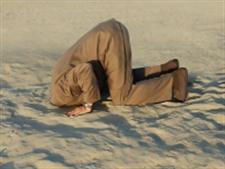"Discovery" Volume I of Wiliam Hayashi's Darkside Trilogy is a riveting, even-paced Science Fiction mystery novel that opens on a young scientist's discovery of a previously unidentified asteroid hurtling toward earth. At the same time the FBI is made aware of several unsolved missing persons cases beginning as far back as the 1960's where nearly 2000 U.S. citizens have simply vanished. Half-way across the globe an advanced aircraft of unknown origin is shot down over the Middle East. The story follows the threads that tie these people and incidents together as they become the focus of government power-brokers, and where national security concerns seek to compel the commodification of scientific discovery to serve military, political and/or industrial purposes. Set against the backdrop of a period 40-some odd years after the Civil Rights movement in a fictionalized alternate U.S., the novel pointedly addresses issues of race, class, gender and educational stereotypes as they relate to career, loyalty, friendship, love, the pursuit of happiness and freedom in the burgeoning Space Age.
The novel is steeped in science and scientific terminology but gratefully made accessible to those who have long forgotten their last physics course. The author, William Hayashi's style is methodical and procedural. He writes with exacting detail which is either a minus or a plus depending upon the reader's preferences. Because this is a mystery novel, early on I found myself sometimes thrown off-track by the author's focus on mundane details wondering whether these were important to the storyline. It became clear, however, as I read on that the details were simply atmospheric and not relevant to the plot which allowed me to consume the 500 plus pages in about 3 days. The book contains some "adult" situations. The sexual depictions are intense, somewhat graphic but written in the vein of adult modern romance which was infinitely suitable for the characters and the plotline.
The final section of the book is a sneak peek of Chapter 1 of Volume II of the Darkside Trilogy entitled, "Conception." "Conception" appears to be a prequel to "Discovery" providing the reader with historical reference and introducing the reader to the players who created the technology behind the first novel. I look forward to its release and enthusiastically recommend "Discovery."





